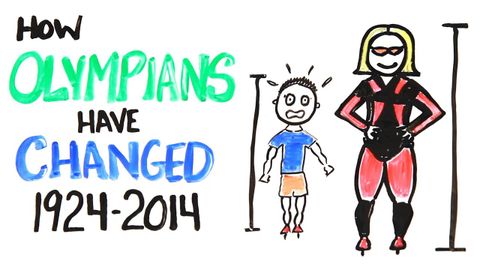オリンピック選手はどう変わったか(1924年~2014年 (How Olympians Have Changed (1924-2014))
姚易辰 が 2021 年 01 月 14 日 に投稿  この条件に一致する単語はありません
この条件に一致する単語はありませんUS /ˈævərɪdʒ, ˈævrɪdʒ/
・
UK /'ævərɪdʒ/
- n. (c./u.)平均
- v.t.平均する
- adj.典型的な : 普通の : ありふれた : 普段の
US /ɪk'strimlɪ/
・
UK /ɪkˈstri:mli/
- n. (c./u.)人間社会;世界;世界;宇宙;分野
US /ˈsaɪəns/
・
UK /'saɪəns/
エネルギーを使用
すべての単語を解除
発音・解説・フィルター機能を解除

